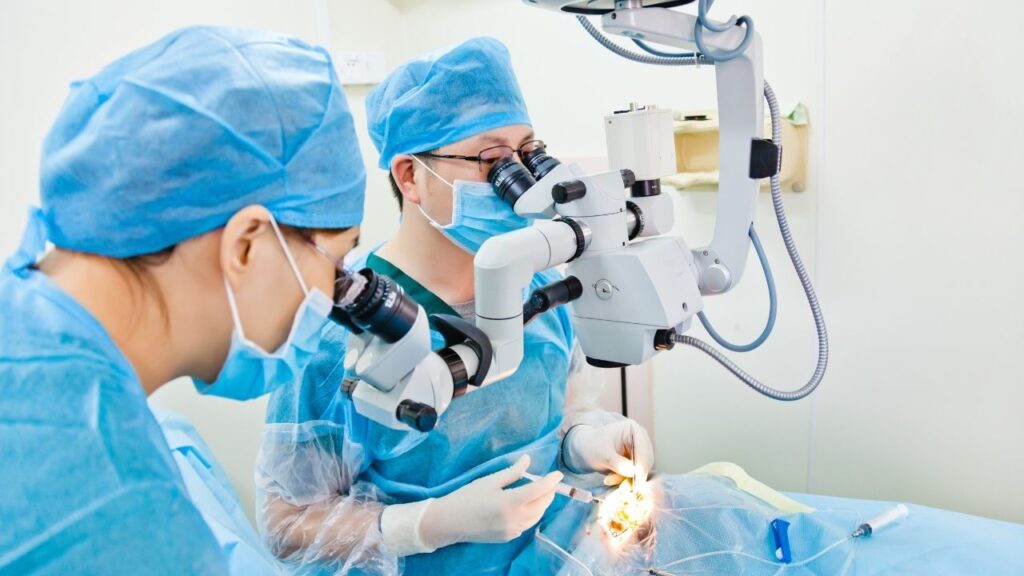Spine surgery has evolved dramatically over the past few decades, with laser-assisted techniques representing one of the most significant advances in neurosurgical care. For patients considering cervical spine surgery, understanding these innovative approaches can help you make informed decisions about your treatment options.
Laser spine surgery combines precision technology with minimally invasive techniques to address various spinal conditions. This approach has transformed how neurosurgeons treat spine-related problems, offering patients new hope for relief from chronic pain and improved mobility.
How Laser Spine Surgery Works
Laser-assisted spine surgery uses focused light energy to precisely remove or modify tissue around the spine. The surgeon makes a small incision and inserts a thin laser fiber, which delivers concentrated energy to the targeted area. This process allows for extremely precise tissue removal while minimizing damage to surrounding healthy structures.
The laser energy can vaporize disc material, shrink tissue, or seal blood vessels during the procedure. This precision is particularly valuable in cervical spine surgery, where delicate structures like nerve roots and the spinal cord require careful handling. The controlled nature of laser energy helps surgeons work with exceptional accuracy in these sensitive areas.
Conditions Treated with Laser Spine Surgery
Several spinal conditions can benefit from laser-assisted techniques. Herniated discs, one of the most common reasons for spine surgery, respond well to laser treatment. The laser can precisely remove the protruding disc material that presses against nerve roots.
Spinal stenosis, a condition where the spinal canal narrows, can also be addressed using laser techniques. The precision of laser energy allows surgeons to remove bone spurs and thickened ligaments that contribute to nerve compression. Cervical spine surgery often involves treating these conditions in the neck region, where traditional open surgery can be more challenging.
Benefits of Laser Spine Surgery
Patients who undergo laser-assisted spine procedures often experience several advantages over traditional open surgery. Smaller incisions mean less tissue damage, reduced scarring, and typically faster healing times. Many patients report less post-operative pain compared to conventional spine surgery approaches.
The precision of laser technology also reduces the risk of damage to surrounding healthy tissue. This is particularly important in cervical spine surgery, where protecting nerve function is crucial. Additionally, many laser spine procedures can be performed on an outpatient basis, allowing patients to return home the same day.
Recovery time is often shorter with laser-assisted techniques. While traditional spine surgery might require weeks or months of recovery, laser procedures may allow patients to return to normal activities more quickly, though individual recovery times vary based on the specific condition and procedure performed.
Risks and Considerations
Like any surgical procedure, laser spine surgery carries certain risks that patients should understand. While complications are generally less common than with traditional open surgery, they can still occur. Potential risks include infection, bleeding, nerve damage, or incomplete resolution of symptoms.
Not all spine conditions are suitable for laser treatment. The size and location of the problem, as well as the patient’s overall health, influence whether laser-assisted techniques are appropriate. A thorough evaluation by an experienced neurosurgeon is essential to determine the best treatment approach for each individual case.
Is Laser Spine Surgery Right for You?
Determining whether laser-assisted spine surgery is appropriate requires careful evaluation by a qualified neurosurgeon. Factors such as the specific condition, its severity, location, and your overall health all play important roles in this decision.
The Adelaide Neurosurgery Centre specializes in advanced spine treatments, including laser-assisted techniques. Their experienced team can evaluate your condition and discuss whether these innovative approaches might benefit your specific situation. The Adelaide Neurosurgery Centre’s expertise in modern neurosurgical techniques helps ensure patients receive the most appropriate care for their individual needs.
Conclusion
Laser-assisted spine surgery represents a significant advancement in treating various spinal conditions, offering patients less invasive options with potentially faster recovery times. Whether you’re dealing with cervical spine issues or other spinal problems, understanding these modern techniques can help you make informed decisions about your care.
If you’re experiencing spine-related symptoms that affect your quality of life, consulting with experienced neurosurgeons who offer advanced treatment options is an important step. The Adelaide Neurosurgery Centre provides comprehensive evaluations and access to cutting-edge treatments, including laser-assisted techniques when appropriate.

